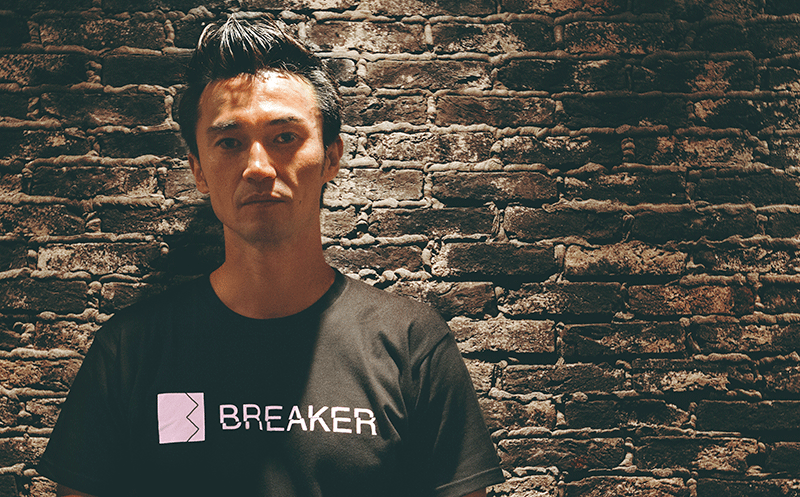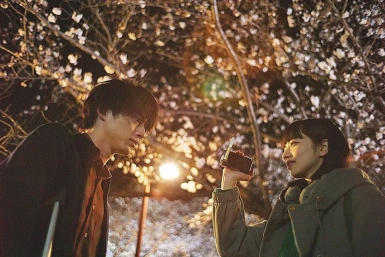We chat with a few of Japan’s key players in the online video business to find out more about what it takes to gather a following.
The Boston-born Michelle Phan began posting makeup and makeover tips online when she was 18, branching out to YouTube two years later. She now makes $3 million a year in online revenue alone, not including revenue from the cosmetics platform ipsy, which generates approximately $120 million in sales per year. Lauri Vuohensilta and his wife Anni, the Finnish couple behind the Hydraulic Press Channel, earn tens of thousands of dollars per video in ad revenue for clips that depict a variety of objects – everything from giant gummi bears to diamonds – being flattened under an industrial strength press. They’ve only been running their channel for one year. The common threads between these content creators and thousands more online? One is the medium where they’ve chosen to post their content, and the other is the loyalty of the fans that they’ve amassed, each one supporting their creators with clicks, comments, and even purchases of the products that they put onto the market.
In this new media landscape, performers are no longer beholden to managers, agents, or production companies, traditional standards for “quality” are upended, and community is king. This DIY trend in online entertainment is a worldwide phenomenon, and has also found fertile ground in Japan, a media market that is best known for doing things in a completely different way from the rest of the world (remember, this is the only country in the world where Yahoo reigns supreme on the internet).
One person who has been working within this media landscape for more than two decades is Alan Swarts, the founder and CEO of the digital media company, Breaker. The half-Japanese/half-American Swarts grew up in Colorado, and he remembers watching his very first music videos playing in heavy rotation on those old UHF channels. After he graduated from university in New York, he spent some time working in production before talking his way into a position at MTV Japan. As he recalls, “the pitch was, I was going to be the Kurt Loder of Japan.” It only took him a couple of years to understand that he really wasn’t cut out to be a presenter.
He worked in production and distribution at Nickelodeon for a few years before he moved on to MTV International, where he helped launch the channel in several different countries. An opportunity with a mobile video venture called Flux brought him back to Japan after six years, and three years later, he was ready to launch his own brand.
He launched Breaker (named for “breaking barriers, breaking borders, breaking new talent”) three years ago with John Possman, a music industry veteran who had worked with EMI and Virgin Records, and Shigeo Maruyama, who was the head of Sony when CDs were at their peak, and when the PlayStation rose to ascendancy in the video game world.
Swarts is well aware of how YouTube commonly fits into the evolution of standard media – from network TV to hundreds of channels on cable TV to an internet that serves up more than a billion websites to hundreds of millions of hours of streaming video on YouTube. “But that sequence has yet to happen in Japan. Cable TV is already on its decline in Japan; it peaked at 20% distribution. There’s cord-cutting in the US, but that was after about 98% distribution. That’s largely due to gatekeepers like Dentsu and the networks that didn’t want cable TV to be successful. It’s the same thing in talent and entertainment – the same management companies have been successful. There are people in their 80s who basically run the entertainment industry right now. That’s probably not going to be toppled any time soon; it just has to coexist, and you just have to corner a different part of a big pie. That’s why the team we’ve assembled for Breaker is a combination of new generation media people as well as people from established media. Having someone like Maruyama-san is great because in order to disrupt the existing system, I think you need to work within that system.”
A key aspect of success in today’s online arena is to foster a strong sense of belonging between artists and supporters as well as giving those fans a platform where they can connect with one another. David Craig, a media studies professor from the University of Southern California who had previously interviewed Swarts about the Breaker project, has coined a term for this new media format: communitainment. As Craig describes it, one of its hallmarks is a change in the usual relationship between artist and public. As he describes it, these platforms become “places where audiences can hang out online with their friends … even if that includes a million other friends. They are not just viewers, listeners, or readers. Rather, they hope to belong to a community that shares similar interests, including interests in that one communitainer’s life, skills, insights, experience, or looks.”
Another crucial component of the communitainment dynamic is the idea of “authenticity.” It’s a word that you’ll often hear from people who make their living on YouTube, but it’s not an easy one to define. While some content creators may call it staying true to themselves or their audience, it becomes more problematic when brands and companies court these creatives in the service of commerce, and earning money becomes not just an issue of online ad revenue, but endorsements as well. When it comes to this term, Craig takes a somewhat cynical approach to the idea of authenticity. “The ability to at least appear genuine keeps coming up as a value proposition for their communities … and their brand sponsors.”
What matters far less for participants – creators and viewers – in this new media environment is how “good” a given piece of content is. As Swarts explains, this might be important, but there are other things that take precedence: “It’s not about how something is shot, or how good the narrative is – or, better yet, it is those things, as well as how do you get your audience involved? How do you co-create the content with your audience and make it communal and shareable?”
One husband and wife duo who have answered these questions perfectly are Simon and Martina Stawski. Simon and Martina came to South Korea as high school teachers, and began uploading videos to YouTube with the channel EatYourKimchi. Over the course of several years, Simon and Martina’s humorous observations about Korean food and culture earned them not only a large and devoted base of followers, but also led to brand sponsorships, the establishment of their own studio – even their own café and clothing line. It didn’t start out brilliantly, though, as Simon points out. “Our first month, we made five dollars, and I remember saying, ‘we’re fucked.’ But by the end of the year, we were able to grow our channel enough that Martina could quit her job and we could make a living off of this.”
From the beginning, though, they had their sights set on Japan, and after meeting Swarts at the annual VidCon conference two years ago, Simon and Martina decided to make their move. Since they arrived in Japan at the beginning of the year, they changed the name of the channel to EatYourSushi and made some alterations to their programming format, but the secret to their success hasn’t changed. They are actively engaged with their followers, and they pay ruthless attention to what works and what doesn’t on their channel.
As Martina explains, “one of the things that we tell everyone that we meet that’s on YouTube is that you have to be so self-critical. YouTube gives you this entire analytics suite to look at your videos and you can watch when people drop off. You can see exactly when it happens.” Simon adds, “So at the five-minute mark you see a dropoff, and then you go back to the video to see what happened – oh, we did a 30-second montage of flowers. Well flowers are out.”
And although Simon and Martina have achieved a degree of internet stardom that many would envy, they look at their fame with a bit of detachment. Martina explains, “We’re still part of the old school idea of having to be talented and good-looking. Like Michael Jordan and Tom Cruise: those are famous people!” Simon adds, “The YouTube scene is very bizarre to us. For people who grew up with YouTube, the idea of YouTube fame makes sense, but to me it still doesn’t.”
“There are people on the internet that make significantly better videos about Japan than we do, significantly better videos about food. But they don’t get the views that we do. So it’s not just about the quality of the content that you produce: a major thing that you also have to consider is the community that you foster.”












